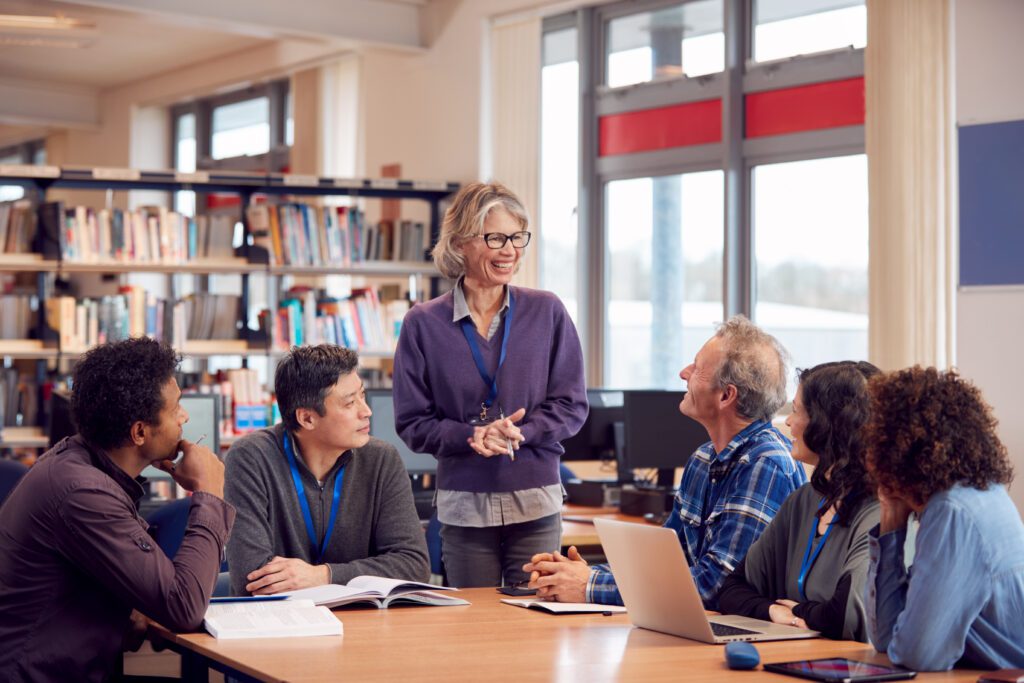If planning professional development (PD) for your staff has ever felt like trying to assemble a jigsaw puzzle with no picture on the box, you’re not alone. With so many competing priorities in schools – curriculum updates, wellbeing initiatives, staffing changes – creating a plan that’s strategic, engaging, and actually improves practice can feel overwhelming. But it doesn’t have to be.
Done well, a professional development plan becomes your roadmap for growth – a clear, evidence-informed guide that empowers teachers and improves student outcomes. Here’s how to write one that actually works.
Start with Purpose, Not Programs
One of the biggest missteps in school PD is diving into workshops or courses before identifying the real goal. An effective plan starts with purpose, not programs. According to AITSL (2022), professional learning should be directly aligned with school improvement goals and linked to teacher performance and development needs.
To define your purpose, begin by analysing your school’s current data- look closely at student outcomes, classroom practice trends, and feedback from staff. These insights will help shape priorities that go beyond short-term fixes and instead focus on meaningful, long-term growth. When you articulate what success looks like—not just in terms of student achievement, but also in how teachers grow and collaborate – you create clarity for everyone involved.
Hargreaves and Fullan (2012) remind us that professional capital is built when teachers are not just developed as individuals, but also supported as a collective.
A purposeful plan starts by asking: What kind of professional culture are we trying to build?
Understand What Good Learning Looks Like, for Adults

Planning PD isn’t just about what teachers need to learn – it’s also about how they’ll learn it. This is where adult learning theory, or andragogy, becomes essential. As Knowles et al. (2015) outline, adults learn best when the learning is relevant to their current context, when they have input into their learning journey, and when they’re given the opportunity to immediately apply what they’ve learned.
Instead of opting for one-size-fits-all sessions, an effective plan provides flexibility and choice. It recognises that early-career teachers might need different support from their experienced colleagues. It encourages peer learning, collaborative inquiry, and coaching – not as add-ons, but as embedded practices. Teachers must also be given time and space to reflect, experiment, and make mistakes as part of the learning process.
Timperley et al. (2007) reinforce the idea that great PD is iterative – it doesn’t end when the session ends. Instead, it invites reflection and refinement over time.
Connect the Dots with a Year-Long Approach
 A single PD day can be energising – but on its own, it rarely changes practice. That’s why the most effective development plans are structured over time, with a clear arc that begins with goal-setting and stretches across terms or even years.
A single PD day can be energising – but on its own, it rarely changes practice. That’s why the most effective development plans are structured over time, with a clear arc that begins with goal-setting and stretches across terms or even years.
Think of PD as a narrative: there’s a beginning where goals are set, a middle where ideas are tested and refined, and a culmination where outcomes are reviewed and shared. Throughout this journey, create checkpoints – opportunities for reflection, discussion, coaching, and iteration. Whether it’s termly workshops, monthly PLCs, or informal learning huddles, ensure your structure promotes both depth and continuity.
When teachers have time to make sense of new ideas, try them out in context, and return to reflect and refine, learning sticks. Mockler and Groundwater-Smith (2015) emphasise the importance of ownership in professional growth—when teachers feel that the learning is for them, not done to them, they engage with greater depth.
Keep Cognitive Load in Mind

Professional learning needs to be thoughtfully paced and delivered in ways that honour how the brain learns. Cognitive Load Theory (Sweller, 1988) and Mayer’s (2005) work on multimedia learning caution against overwhelming participants with too much information or poorly designed materials.
To create learning experiences that are cognitively manageable and emotionally engaging, focus each session on a small number of key concepts. Use visuals purposefully and keep presentations clean and focused. Build in pauses or reflective activities to allow teachers to process and apply new ideas. Remember that in the busy world of education, quality beats quantity every time.
Build in Feedback and Flexibility
No plan is perfect from day one – which is why flexibility is crucial. The most effective professional development plans are not static; they evolve in response to feedback and shifting needs. Use multiple sources of input: anonymous surveys, coaching reflections, informal conversations. These insights will guide you in adjusting content, pacing, or support as the year progresses.
AERO (2023) supports this iterative model, suggesting that when schools treat professional learning as a cycle of continuous improvement, the impact on both teacher practice and student outcomes is significantly enhanced.
Final Thoughts
An effective professional development plan is more than a spreadsheet of sessions. It’s a living, breathing blueprint for teacher growth. At Education Changemakers by Go1, we help schools move from compliance to connection – from tick-the-box PD to meaningful, context-specific learning.
Start with purpose. Design for adults. Honour teacher time and talent. Embed feedback. And most of all… stay curious.
Because when teachers grow, students thrive.
References
Australian Education Research Organisation. (2023). High-impact teaching strategies: Evidence summary. AERO. https://www.edresearch.edu.au
Australian Institute for Teaching and School Leadership. (2022). Developing a culture of professional learning. AITSL. https://www.aitsl.edu.au
Hargreaves, A., & Fullan, M. (2012). Professional capital: Transforming teaching in every school. Teachers College Press.
Knowles, M. S., Holton, E. F., & Swanson, R. A. (2015). The adult learner: The definitive classic in adult education and human resource development (8th ed.). Routledge.
Mayer, R. E. (2005). The Cambridge handbook of multimedia learning. Cambridge University Press.
Mockler, N., & Groundwater-Smith, S. (2015). Engaging with student voice in research, education and community: Beyond legitimisation and guardianship. Springer.
Sweller, J. (1988). Cognitive load during problem solving: Effects on learning. Cognitive Science, 12(2), 257–285. https://doi.org/10.1207/s15516709cog1202_4
Timperley, H., Wilson, A., Barrar, H., & Fung, I. (2007). Teacher professional learning and development: Best evidence synthesis iteration. New Zealand Ministry of Education.




